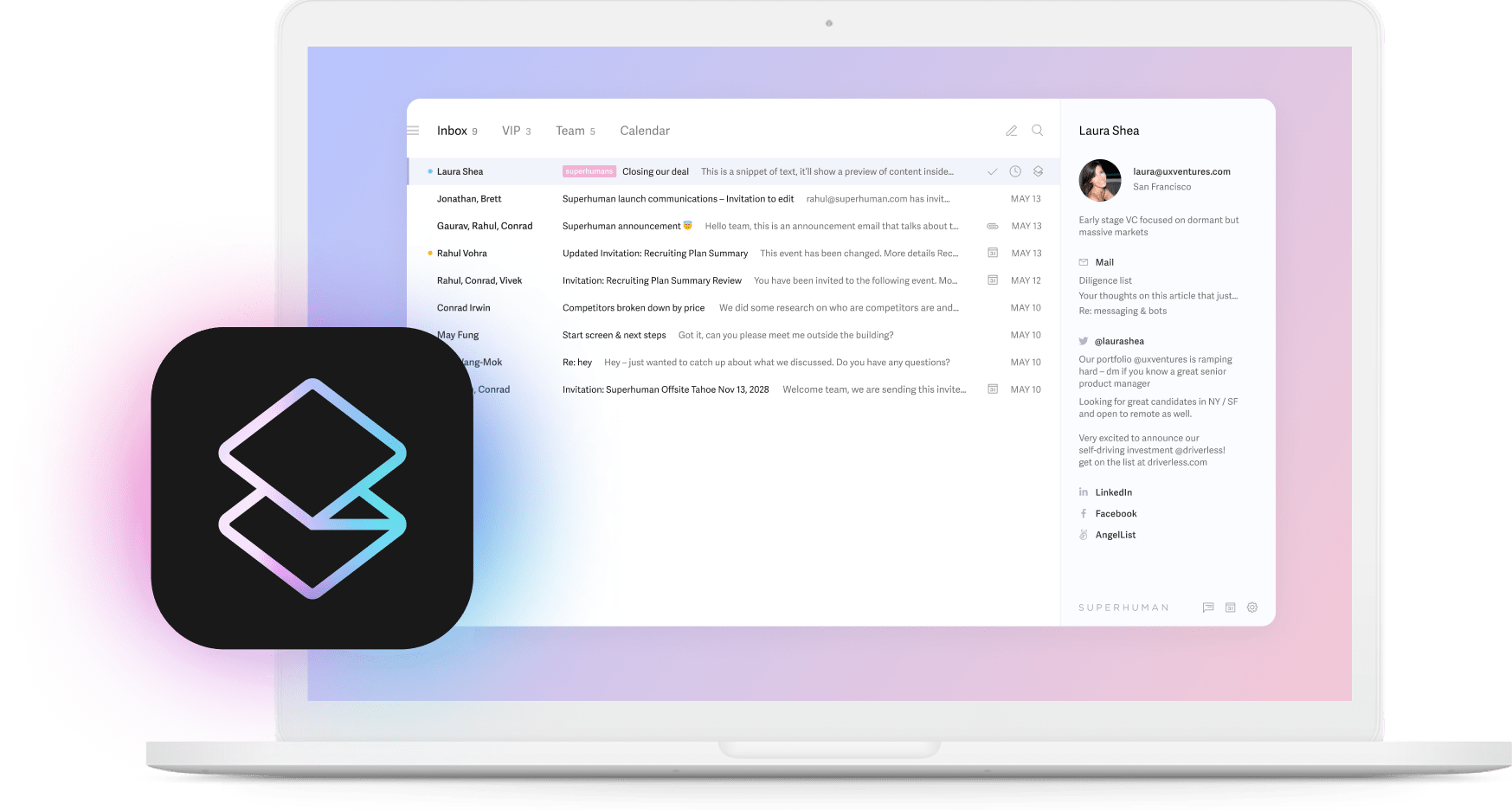
Ever wonder why some teams seem to effortlessly achieve twice the results with half the effort? The secret often lies in how they streamline workflows — those daily sequences of steps everyone follows to get things done. While big-picture business processes might get all the attention, it's these individual pathways that determine whether your workday flows smoothly or feels like swimming through molasses.
Think about your typical workday. How much time do you spend on email? How often do you find yourself caught in repetitive tasks that seem to eat away at your productive hours? The costs of inefficient workflows hide in plain sight, causing frustration and wasted potential across teams. When organizations fix their broken workflows, they unlock more than just time savings — they create space for meaningful work and innovation. The difference isn't about working harder, but designing smarter pathways that cut out busy work and focus energy where it matters most.
This guide will walk you through practical steps to identify workflow bottlenecks, implement effective solutions, and build systems that evolve with your organization. Whether you're a team leader looking to boost productivity or an individual contributor seeking to reclaim your day, you'll find actionable strategies to transform how work gets done.
Identifying workflow bottlenecks
Before fixing workflows, you need to find where they're breaking down. Without pinpointing these trouble spots, you might waste time fixing the wrong things. Understanding the distinction between being busy and productive is essential in this process.
Signs your workflows need help
Watch for these red flags that scream "fix me first":
- Work piling up in specific areas: Some team members drowning while others wonder what to do next
- The same mistakes happening repeatedly: Tasks bouncing back for corrections multiple times
- Work sitting idle: Projects stuck waiting for approvals or resources
- Departments not talking to each other: Information trapped in silos, creating confusion
- Inconsistent results: The same process producing wildly different outcomes
Tools to map the mess
Several visualization approaches can help you see where things fall apart:
- Flowcharts: Map the entire journey from start to finish
- Swim lane diagrams: See who handles what and where handoffs happen
- Value stream maps: Spot where information and materials get stuck
- Kanban boards: Track how work moves (or doesn't) through your process
Numbers don't lie
Measure these key metrics to quantify your bottlenecks:
- Cycle time: How long does the whole process take?
- Throughput: How much do you produce in a given timeframe?
- Wait time: How long do tasks sit untouched?
- Backlog size: How much unfinished work is accumulating?
Once you've found multiple bottlenecks, use a simple matrix to prioritize:
- High impact, low effort: Do these immediately
- High impact, high effort: Plan these carefully
- Low impact, low effort: Tackle if you have time
- Low impact, high effort: Probably not worth it
The 5-step path to smoother workflows
Optimizing workflows requires a systematic approach to improving work effectiveness that balances analysis, elimination, automation, standardization, and improvement.
1. Map what's really happening
Start by documenting what people actually do, not what they're supposed to do. Create process maps and flowcharts to assist in workflow development. Talk to everyone involved with questions like "Where do you most often get stuck?" and "Which tasks eat up your day?" Measure how long things currently take to establish your starting point.
2. Cut the fat
Apply the 80/20 rule — which 20% of activities create 80% of your value? Look at each step and ask: Does this add value for the customer? Would they pay for it? Then decide whether to cut it entirely, combine it with another step, or keep but improve it.
3. Let robots handle the boring stuff
Look for tasks that happen repeatedly, follow clear rules, and tend to create errors when humans do them. These are prime candidates for automation, such as integrating AI into workflows. The options range from simple workflow apps to advanced robotic process automation.
4. Create clear recipes for success
For steps that can't be automated, create clear standard operating procedures. Think step-by-step instructions with assigned responsibilities and decision criteria. Develop templates so people don't reinvent the wheel each time. Add quality checkpoints at critical moments to catch issues early.
5. Never stop improving
Set up metrics that directly show workflow performance. Review them regularly — weekly, monthly, quarterly — to spot new opportunities. Create ways for employees to share insights since they see problems you might miss. Implementing productivity systems can support ongoing improvement and help your team work smarter.
Technology tools for workflow management
The right tech stack can transform your workflow management. Here are four key categories of tools that can turn workflow nightmares into dreams.
Process automation platforms
These platforms help eliminate repetitive tasks and enhance efficiency through automation. When shopping for one, consider:
- Low-code platforms: Perfect when you need something simple that non-technical people can use, such as Zapier, Pabbly Connect, or Make
- API-based solutions: Great for connecting your existing systems rather than replacing them
- Enterprise-grade solutions: Built for complex processes spanning multiple departments
Match the solution to your company's size and complexity. A small business might love a low-code platform's quick setup, while large enterprises typically need more robust solutions.
When calculating ROI, look at time saved per process, error reduction, people freed up for higher-value work, and implementation and maintenance costs. For example, using AI in email marketing can automate personalized outreach and improve customer engagement.
Project and task management systems
Beyond the usual suspects, several project management systems offer unique advantages:
- Asana: Visual project tracking with intuitive dependency mapping
- Monday.com: Highly customizable with strong reporting
- ClickUp: Comprehensive features with flexible views
- Notion: Combines project tracking with knowledge management
In addition to project management systems, marketing automation tools can streamline B2B sales processes and enhance efficiency.
Tips for successful implementation:
- Map your current workflows before configuring the tool
- Connect it to your communication tools and file storage
- Test with a pilot team before rolling out widely
- Create clear naming conventions
- Build templates for recurring projects
Communication and collaboration tools
Smart workflow management needs thoughtful communication using the right tools.
Real-time vs. Asynchronous Communication
- Real-time tools (video calls, instant messages) work best for:
- Solving problems together
- Decisions needing immediate input
- Building relationships
- Asynchronous tools (email, shared documents) shine for:
- Thoughtful, detailed communication
- Working across time zones
- Protecting focus time
Despite chat apps taking over, email remains where high-value collaboration happens most. This is why adopting AI email platforms to improve email management can significantly boost productivity. Tools that streamline email replies make email more efficient. Superhuman customers send and respond to 72% more emails than non-customers, and they respond one day sooner on average. For teams using Superhuman's AI features, customers send and respond to 34% more emails compared to those who don't use AI.
Try SuperhumanAnalytics and reporting solutions
To continuously improve workflows, you need visibility into what's happening:
- Workflow analytics tools track metrics like cycle time and bottlenecks, showing where processes stall and who might need help
- Dashboards should match different needs:
- Executives need high-level KPIs and trends
- Team leaders need performance and resource data
- Individual contributors need productivity metrics
When using data to drive improvement:
- Establish baseline metrics
- Identify processes with the highest potential gains
- Make targeted changes
- Measure the impact
- Document what worked
Change management: getting people on board
You can design the perfect workflow, but if people don't use it, you've wasted your time. Organizations with strong change management are up to seven times more likely to meet their project goals. Here's how to handle the human side of workflow changes:
Overcoming resistance to change
Resistance kills most workflow improvements before they have a chance. To minimize pushback:
- Bring stakeholders into the planning process early
- Explain why changes matter to both the company and to them personally
- Create open forums to address concerns head-on
- Turn potential resistors into advocates by giving them roles in implementation
Training that actually works
Training makes or breaks adoption of new workflows:
- Mix up training formats — workshops for hands-on people, videos for visual learners, guides for readers
- Create role-specific training focusing on what matters to each team
- Train a few champions who can help others learn
- Set up ongoing support like help desks and knowledge bases
Finding your internal champions
Internal advocates dramatically boost adoption rates:
- Identify influential team members to serve as cheerleaders
- Give champions special access and advanced training
- Empower them to gather feedback and suggest improvements
- Recognize people who drive successful adoption
Showing off early wins
Nothing builds momentum like visible success:
- Set clear metrics to measure the impact of changes
- Focus on quick wins that show immediate value
- Share positive outcomes regularly with everyone
- Create visual dashboards showing improvements
Advanced workflow techniques
As workflows grow more complex, basic optimization often falls short. These advanced approaches take your workflow efficiency to the next level, especially in areas where enhancing sales team efficiency is critical.
Predicting problems before they happen
Predictive workflow management uses past data to spot bottlenecks before they form. Rather than fixing problems after they appear, you can prevent them entirely.
To start with predictive management:
- Gather data on how your workflows performed over time
- Look for patterns in where things typically get stuck
- Use AI tools to predict when similar issues might happen again
- Create automatic routing rules based on these predictions
For example, if data shows approval processes consistently slow down during quarter-end, you can build in extra buffer time or assign backup approvers during these periods. While leveraging AI offers significant benefits, it's important to balance automation with human interaction to maintain personalized engagement where it counts.
Breaking down department walls
Departmental silos kill workflow efficiency. Cross-functional integration creates smooth handoffs between teams.
To implement this approach:
- Map processes that cross department boundaries
- Assign clear ownership for each segment and transition point
- Build shared dashboards showing the entire workflow
- Create standard communication protocols between departments
The key is having "process owners" responsible for the complete journey, regardless of which departments handle different parts. This prevents tasks from vanishing into the void between teams.
Bringing agile beyond software
Agile methods aren't just for coders — they can transform any business process that needs continuous improvement.
Apply agile principles to non-tech workflows by:
- Breaking processes into 1-2 week "sprints"
- Holding daily 15-minute check-ins to identify blockers
- Using Kanban boards to visualize workflow stages
- Running regular retrospectives to find improvement opportunities
Sprint-based improvement allows small, incremental changes rather than massive overhauls. Customer service teams can use two-week sprints to test new response templates, measuring results and tweaking quickly.
Measuring success: numbers that tell the truth
To evaluate your workflow improvements, you need metrics that matter. When measuring effective workflow processes, focus on these key indicators that help you quantify gains, justify investments, and spot areas needing more work.
The numbers that actually matter
When measuring workflow performance, focus on these indicators:
- Cycle time: How long does the entire process take? Organizations using workflow automation have cut processing times from 100 days to under 10 days in some cases.
- First-time-right percentage: How often do people complete tasks correctly on the first try? This directly impacts rework costs.
- Resource usage: Are you deploying people's time and skills effectively across workflow stages?
- Cost per transaction: What's the total expense of completing a workflow, including labor, technology, and overhead?
- Employee happiness: Do staff feel the new workflow helps them? This predicts long-term adoption success.
Create a dashboard that brings your metrics together in one place. Make sure it shows before-and-after comparisons, highlights trends over time, includes both leading and lagging indicators, and works for different audiences.
Common workflow pitfalls and how to avoid them
Even well-intended workflow improvements can go sideways. Knowing these common traps helps you navigate around them.
Making simple things complicated
One of the most frequent mistakes is overengineering straightforward processes. This creates unnecessary steps, more training, and lower adoption.
Start with minimal viable improvements and expand gradually. Map what's currently happening before making changes, and constantly ask whether each step truly adds value.
Falling for shiny new tools
Many teams implement new tech without fixing underlying process issues, just digitizing their inefficiencies.
First optimize the process manually, then choose technology that enhances it. You need process understanding before technology implementation.
Forgetting to ask the people who do the work
Workflows designed without input from daily users face resistance and implementation problems.
Involve end-users from planning through implementation. Create feedback loops that allow continuous improvement based on real experiences. Employee feedback often reveals hidden inefficiencies before metrics do.
Future-proofing your workflows
Creating efficient workflows isn't just about fixing today's problems — it's about building systems that can adapt to tomorrow's challenges.
Build for growth
When designing workflows, imagine how they'll perform when volumes multiply. A process that handles 10 requests perfectly might collapse at 100 or 1,000. Plan for growth by:
- Building modular workflows you can expand without rebuilding
- Documenting the thinking behind decision points
- Testing workflows with double or triple your current volumes
Create flexibility points
Technology evolves constantly, and your workflows need to adapt. Include deliberate connection points where you can plug in new tools:
- Use APIs and standard formats wherever possible
- Create buffer layers between critical process steps
- Document why each step exists, not just how to do it
Watch the horizon
Several key technologies are reshaping workflow possibilities:
- AI and automation: 66% of professionals expect AI to triple productivity within five years, while executives are twice as likely to expect 10x gains. AI tools now automate complex decisions that once required human judgment.
- Low-code/no-code platforms: These tools let business users build and modify their own processes without IT help.
- Internet of things: Connected devices create new ways to automatically collect data and trigger workflows based on real-world events.
- Plug-and-play automation: Pre-configured automation modules like Appy Pie Automate and Hootsuite make it easier to implement standardized workflows quickly.
Remember that workflow optimization isn't a one-time project but an ongoing journey. By avoiding common pitfalls and creating mechanisms for continuous improvement, you build workflows that evolve with your organization and consistently deliver value.






